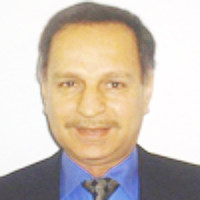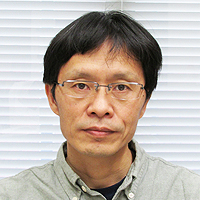Dairy cattle producers’ perception on Oestrus Synchronization and mass artificial insemination services in Waliso and Ilu Districts of South West Shoa Zone of Oromia, Ethiopia
Published on: 5th March, 2020
OCLC Number/Unique Identifier: 8545201990
The study was conducted in Ilu and Waliso districs of South West Shoa Zone to investigate the perception of dairy cattle producers on oestrus synchronization and mass artificial insemination services. A total of 122 respondents (38 from Ilu and 84 from Waliso districts) owning at least one lactating cow and participated in synchronization program were randomly selected and interviewed individually by using semi- structured questionnaire. Both primary and secondary data were used to generate reliable information on the intended topic. All collected data were analyzed using SPSS statistical package version 20 and the output was presented by descriptive statistics such as percentage and mean values in inform of graphs. Most of the respondents (67.15%) indicated that their satisfaction level towards synchronization and mass artificial insemination was low. Only few of them reported being satisfied as (medium-13.45%, good - 12.35% and very good - 7.05%). This might be because of shortage of feed, silent heat, poor performance of the inseminator and low awareness of farmers on the technology. From the study it was also noted that the overall percentage (26.22%) of calving rate to oestrus synchronization and mass artificial insemination was low. This might be due to heat detection problem (36%); A.I technician efficiency (29.25%), absence of A.I technician (23.9%) and distance of A.I center (10.25%). Therefore, the skill and knowledge based training should be given for both the farmers and implementers to enhance perception and adoption of the technology.
Magnetic Properties of Reactive Oxygen Species and their Possible Role in Cancer Therapy
Published on: 19th August, 2024
Spin-depending internal magnetic interactions in oxygen are crucial for the chemistry and photobiology of this molecule. Photosynthesis, respiration, and many other life-supporting oxygen reactions are governed by enzymes that use fine magnetic forces to overcome the spin-forbidden character of all aerobic metabolism. Life on Earth occurs on the border between combustion and oxidative phosphorylation, and this balance is largely dependent on reactive oxygen species. ROS can cause apoptosis or cell necrosis, and ROS also controls homeostasis through numerous signaling functions. Until recently, biochemists had not paid attention to internal magnetic interactions that influence the chemical activity of such ROS as superoxide ion, singlet oxygen, peroxynitrite, and many others. The role of superoxide dismutase, the oldest enzyme on the Earth, which provides superoxide concentration control, stresses the importance of the O2-• species as the precursor of many other ROS. Spin-orbit coupling in O2-• and O2 species are the main internal magnetic interactions that could influence cancer growth and be connected with cancer therapy.
Investigation of radiation attenuation parameters of some drugs used in Chemotherapy in Wide Energy Region
Published on: 4th August, 2018
OCLC Number/Unique Identifier: 7844574123
Objectives: The aim of this study is to compute the radiation attenuation parameters such as mass attenuation coefficient, linear attenuation coefficient, half value layer, mean free path, and effective atomic number for some selected chemotherapy drugs such as Lomustine, Cisplatin, Carmustine, and Chlorambucil in the energy range from 1 keV to 100 GeV.
Materials and Methods: The mass attenuation coefficients were calculated with the help of WinXCOM program. Using the obtained mass attenuation coefficients, other parameters such as linear attenuation coefficient, half value layer, mean free path, and effective atomic number were derived.
Results: It is observed that the variations of these parameters with respect to the photon energy show changes in different energy regions. According to the obtained results, Cisplatin has the highest mass attenuation coefficient, linear attenuation coefficient and effective atomic number results among the selected chemotherapy drugs. Moreover, Chlorambucil has the highest half value layer and mean free path results among the selected chemotherapy drugs.
Conclusion: The results of this study are useful for applied science fields such as radiation physics, pharmacology, and medical physics. These results may be useful when the selected chemotherapy drugs are used together with radiology.
An Uncommon Case Report of Hypothyroidism, Type 1 Diabetes Mellitus, and Systemic Lupus Erythematosus with an Immunosuppressive Consequence: A Case Report
Published on: 27th August, 2024
An autoimmune condition known as Systemic Lupus Erythematosus (SLE) affects several systems and manifests itself in a variety of ways. It is far more common among young women who are fertile.It has been demonstrated that a mix of environmental and genetic variables may trigger immunological responses, triggering T and B cells, and leading the B cells to overproduce pathogenic autoantibodies and dysregulate cytokines, which ultimately result in harm to many organs and tissues. One feature of SLE is the presence of antibodies against cytoplasmic and nuclear antigens. An autoimmune illness is also type 1 diabetes. β-cell antibodies (Ab) and other antibodies that cause the autoimmune death of the pancreatic β-cells, which make insulin, are part of the multifactorial pathophysiology of type 1 diabetes mellitus (T1DM).Immunosuppression is the therapy for systemic lupus erythematosus (SLE), and diabetes itself compromises immunity, making infections more opportunistic. We came across an unusual instance of a patient with SLE, T1DM, hypothyroidism on immunosuppression who subsequently acquired pulmonary TB.Key phrase: Autoimmune diseases such as type 1 diabetes mellitus (T1DM) and Systemic Lupus Erythematosus (SLE).
Longitudinal and transverse dimensions of hypertrophied cardiomyocytes in human left ventricle (LV) at autopsy; Heart failure might result from changes in chamber geometry without contractile weakening
Published on: 23rd July, 2019
OCLC Number/Unique Identifier: 8192127540
The shapes and sizes of human cardiomyocytes are accessible to systematic observation under most circumstances only at autopsy. This constraint has seriously curbed the study of these topics, thereby leaving a crippling gap in our understanding of heart failure. In recent years the only published ongoing findings have come from this laboratory. This article is a condensation of these reports, using those sources to develop fresh analyses designed to construct a set of organizing principles. The data are entirely retrospective thereby forbidding hypothesis testing and permitting only hypothesis formation. The hypotheses generated in this way are novel and surprising. In spite of the severe limitations in this methodology is seems possible that some useful new directions of inquiry might evolve from pursuing these original observations.
Cold Atmospheric Pressure Plasma Jet and Plasma Lamp Interaction with Plants: Electrostimulation, Reactive Oxygen and Nitrogen Species, and Side Effects
Published on: 22nd August, 2023
Cold atmospheric pressure plasma (CAPP) treatment is a highly effective method of protecting seeds, plants, flowers, and trees from diseases and infection and significantly increasing crop yields. Here we found that cold atmospheric pressure He-plasma jet (CAPPJ) can also cause side effects and damage to plants if the plasma exposure time is too long. Reactive oxygen and nitrogen species (RONS), electromagnetic fields, and ultraviolet photons emitted by CAPPJ can cause both positive and negative effects on plants. CAPPJ can interact with biological tissue surfaces. The plasma lamp has no visible side effects on Aloe vera plants, cabbage, and tomatoes. A plasma lamp and a cold atmospheric pressure plasma He-jet cause strong electrical signaling in plants with a very high amplitude with frequencies equal to the frequency of plasma generation. The use of plasma lamps for electrostimulation of biological tissues can help to avoid side processes in biological tissues associated with the generation of RONS, UV photons, and direct interaction with cold plasma. CAPP technology can play an important role in agriculture, medicine, the food industry, chemistry, surface science, material science, and engineering applications without side effects if the plasma exposure is short enough.
Unusual presentation of a bilateral basilar stroke: Bradycardia
Published on: 7th September, 2017
OCLC Number/Unique Identifier: 7905950909
We report a case of 79-year-old man who presented to our emergency department (ED) for lipothymia. The patient developed significant bradycardia with hypotension. His EKG objectified a slow atrial fibrillation .the patient rapidly installed a coma. A non-contrast CT brain scan showed a bilateral vertebrobasilar ischemic stroke.
Mesofractal Modeling of Biosystems & Organic Spintronics
Published on: 4th September, 2024
Mesoscopic modeling of complex systems involves thermodynamic nonequilibrium of discrete scaling. Further from quantum correlation on a chip retrieved quantum nonlinear optics with single photons enabled by strongly interacting atoms. Accompanied by mesofractals as the development of meso & micro size fractal structures is required to mimic various biological systems for various functions. Showed through fluorapatite in gelatin‐based nanocomposite, fractal in DNA knots driven by balance of fission & fusion in mtDNA/mitochondrial DNA mechanism, for optical engines for light energy detection described the proportional integral derivative [PI(D)]‐controller set in microbial cells to HCCI/Homogeneous Charge Compression Ignition.
Best and effective practices of wound care and healing among patients with Diabetes Mellitus
Published on: 19th December, 2018
Aim: With the continuing trend in the incidence of diabetic ulcer, the current researches on wound care and healing will bring best and effective practices on wound care and healing among patients suffering from diabetes mellitus.
Methods: This study utilized a systematic review of literatures in light of wound care through Pub Med database with the key words “Diabetes Mellitus,” “wound practices,” “wound healing,” and “systematic review.” The searched literatures were of case reports, interventional studies, and review papers whose main texts were in English.
Results: There were 7,988 published articles yielded from the keywords used and 16 were included in this study. The practiced management and techniques in these literatures focused on comfortable and cost efficient means of wound care and healing with the involvement of group participation than individual plan of care.
Conclusions: There are meager evidences of feasible wound and healing options that needs further studies in resolving wound issues among patients with Diabetes Mellitus. This systematic review establishes the insufficiency of high level of evidence based studies on wound healing in DM patients and brings a track for continuity of rigid studies concerning this topic.
Sounding procedure for characterization of big fusion reactor chambers by means of a compact neutron source with a nanosecond pulse duration
Published on: 20th September, 2018
OCLC Number/Unique Identifier: 7900044986
In the paper a methodology that is elaborated for characterization of big-sized chambers of modern and future nuclear fusion reactors is described. It gives an opportunity to define distortions introduced by surroundings, systems and elements of the chamber into the neutron field generated during the reactors’ operation. The procedure is based on two types of experimental techniques supported by MCNP numerical modelling. These two classes are: 1) the neutron activation methods for measuring changes in anisotropy of the “absolute” neutron yields, and 2) the time-of-flight process for determination of neutron spectra deformations. MCNP calculations afterwards give an opportunity to fix just those elements of the surroundings that introduce the main impact in the perturbed neutron field characteristics.




